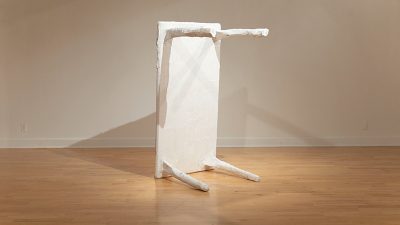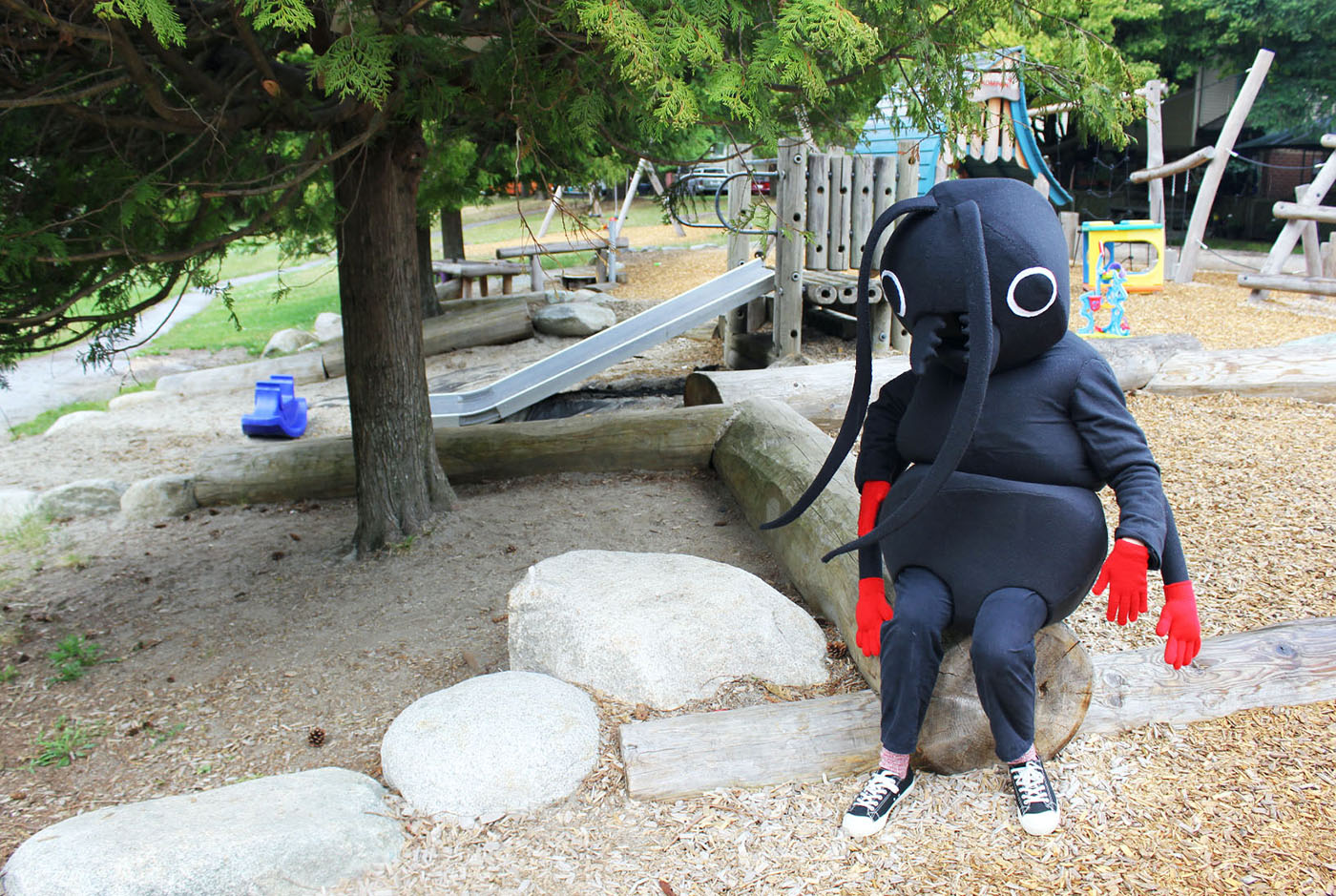Parallel Lines: Comforting Discomfort
Art
It’s tempting to think of comfort and discomfort as opposites, positive and negative poles we move back and forth between. Comforting Discomfort, an exhibition running through spring featuring the work of Dalila Sanabria and Fiona Matisse Barney at the Rio Gallery, treats the two states as parallel lines of inquiry rather than sides of a coin. The way Barney and Sanabria have conceptualized comfort and discomfort allows us space to reconsider the boundaries of self-care, the importance of empathy and the value of the familiar.
Barney and Sanabria are interesting human lenses for this concept. Both artists are presenting separate work in different mediums, and their methods help loosen the brain of its desire to polarize comfort and discomfort. Sanabria creates sculptural objects using non-durable materials like cardboard, drywall, plaster and found furniture. Barney creates playful narratives using photography, illustration, sculpture and performance. That these two approach a supposedly diametric concept—from separate, equally valid lines of inquiry—reinforces the idea that their subjects are similarly aligned.
“Fiona and I come from very different backgrounds, with very different motives to making the work that we do,” says Sanabria. “The underlying thread that we’ve found is comfort and discomfort––the ways in which we view it and why it matters to us both individually and to the world at large.” For Barney, this endeavor is the basis for stability, for finding a place where “trying” is an end in itself. “It is a curious thing, really,” says Barney, “to constantly be searching for a space with sufficient ‘OK-ness’ to be able to do important things in their sphere of influence.”
“Both artists are presenting separate work in different mediums, and their methods help loosen the brain of its desire to polarize comfort and discomfort.”

And so what is the sphere of influence that matters? When we can maintain “OK-ness,” who benefits from our important work? This isn’t always a choice, but Barney’s work seems to argue that the overlooked and unseen is a worthy focus. In an ongoing piece of work, Barney fixates on ants and their insignificance to humans. “I started the project by making myself an ant costume,” says Barney. “Then, I visited the places where I grew up, placing ant houses I made out of unfired clay whenever I saw an ant. I wore that ant costume to make ants feel comfortable, and by doing so, I felt comforted in return. I don’t know if the ants cared about the houses I made for them or the fact I was in an ant costume. I don’t even know if they noticed, however, the act of comforting the insignificant is an important one to me, which made me feel a sort of ‘OK-ness’ in my attempts to care.”
Ultimately, the act of caring is a selfish one, but Barney’s work considers that true self-care is enabled by empathy for the overlooked, the marginalized. The pursuit of selfishness becomes a means toward connection rather than its own end goal. That this feels radical—that when we feel OK about ourselves, we care better for others—itself feels overlooked.
Alongside this, is Sanabria’s work, which is informed by her family’s deportation from the United States—something that shaped her youth dramatically. “It would spark the next 10 years of my parents’ exile from my home country and consequences that would have me really question this illusion we call permanence,” she says. “What narratives are comfortable and which aren’t, and how does revisiting them change that, if at all?”
“We crave our discomfort as much as we crave our comfort.”
Materiality feels like the crux of Sanabria’s inquiry in this exhibition. Her work mines the domestic space and its objects for their ability to house experiences traumatic and cozy, both carrying their own sense of familiarity. “I feel that memorializing the domestic space is a process that involves this seeking for comfort in the presence of total discomfort,” says Sanabria. “A memorial is often a longstanding structure created to commemorate or uphold the memory of an event or someone significant, usually in mourning. For myself, bringing something grand or monumental into the conversation of the humbler setting such as a home felt congruent with the traumatic experiences I was revisiting. There was a need to hold onto things and also to dispose of some others.”
As life swirls comfort and discomfort together, our time with each breeds a desire for the feelings that both have brought us. In other words, we crave our discomfort as much as we crave our comfort, and familiarity can work like gravity. Barney and Sanabria remind us that these experiences of comfort and discomfort coexist, and that if we choose to interrogate these feelings, we can create a powerful well of empathy. “Conceptually,” says Barney, “they work together to call into question how we engage with people and things in the world, as we also try to understand ourselves as caring, healthy, individuals that live in a dynamic and complex world.”
Visit Sanabria and Barney’s works in Comforting Discomfort at the Rio Gallery on 300 S. Rio Grande St. through March 6.

